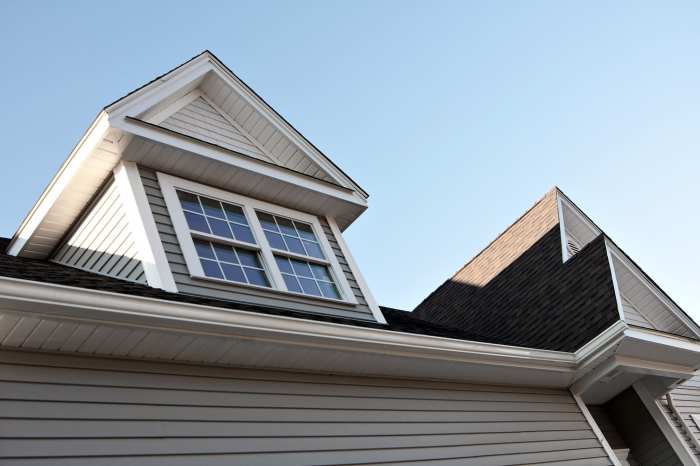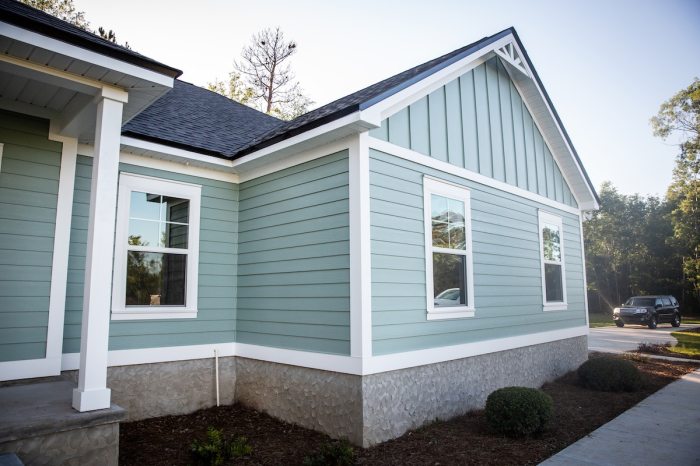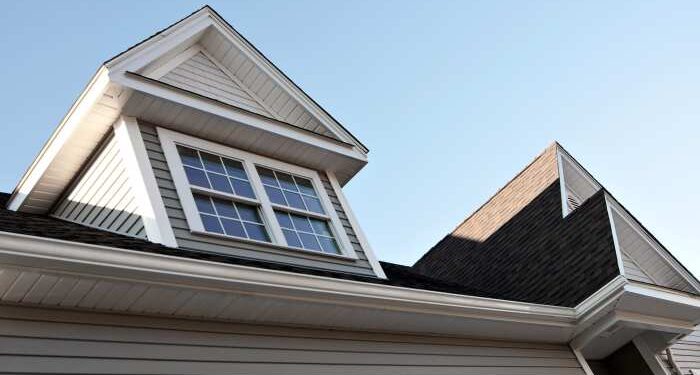Delve into the realm of roofing and siding, where durability meets aesthetics in a harmonious blend. From materials to maintenance, this guide uncovers the secrets to a sturdy and visually appealing exterior for your home.
Learn about the various types of materials, installation techniques, maintenance tips, and energy efficiency considerations that shape the world of roofing and siding.
Types of Materials for Roofing and Siding
When it comes to roofing and siding, there are various materials available in the market to choose from. Each material has its unique characteristics, benefits, and drawbacks. Let's explore some common options for roofing and siding materials.
Roofing Materials
- Asphalt Shingles: One of the most popular choices due to its affordability and ease of installation. However, it may not be as durable as other materials.
- Metal Roofing: Known for its longevity and energy efficiency, metal roofs are a durable option that can last for decades.
- Wood Shingles: Provides a natural and rustic look but requires more maintenance to prevent rot and mold growth.
- Clay Tiles: Offers a classic and elegant appearance, ideal for Mediterranean or Spanish-style homes. They are durable but can be costly.
Siding Materials
- Vinyl Siding: Affordable, versatile, and low maintenance. It comes in various colors and styles to suit different architectural designs.
- Fiber Cement Siding: Resistant to fire, insects, and rot, fiber cement siding is a durable option that mimics the look of wood without the high maintenance.
- Wood Siding: Provides a natural and timeless appeal but requires regular painting or staining to maintain its appearance and protect it from the elements.
- Brick Siding: Offers a classic and durable option, adding charm and character to the exterior of a home. However, it can be expensive to install.
Installation Techniques for Roofing and Siding
Proper installation of roofing and siding is crucial for the durability and performance of a building. It not only enhances the curb appeal but also provides protection against the elements.
Roofing Installation
- Prepare the roof deck by ensuring it is clean and free of any debris.
- Install underlayment to provide an additional layer of protection against water infiltration.
- Apply flashing around roof penetrations such as chimneys, vents, and skylights to prevent leaks.
- Install the roofing material according to the manufacturer's instructions, ensuring proper overlap and fastening.
- Finish with ridge caps to seal the peak of the roof.
Siding Installation
- Prepare the walls by repairing any damage and ensuring they are clean and dry.
- Install a moisture barrier or house wrap to protect against water intrusion.
- Start installing siding from the bottom up, ensuring proper overlap and alignment.
- Use the appropriate fasteners for the type of siding material being used.
- Finish with trim pieces around windows, doors, and corners for a polished look.
Importance of Proper Insulation
Proper insulation during roofing and siding installation is essential for energy efficiency and comfort within the building. Insulation helps regulate indoor temperatures, reduces energy costs, and minimizes the risk of condensation and mold growth.
Tools Required for Installation
Some common tools required for roofing and siding installation include:
| Roofing: | Safety harness, ladder, hammer, roofing nails, utility knife, and nail gun. |
| Siding: | Tape measure, chalk line, circular saw, level, siding gauge, and zip tool. |
Maintenance Tips for Roofing and Siding

Regular maintenance is essential to ensure the longevity and durability of your roofing and siding. By following these guidelines, you can identify, repair common issues, and preserve the appearance of your home exterior.
Inspecting for Damage
- Regularly inspect your roofing and siding for any signs of damage such as cracks, leaks, or missing shingles or panels.
- Check for any loose or damaged flashing around chimneys, vents, and skylights.
- Look for any signs of water stains on the ceiling or walls, as this may indicate a leak in the roofing or siding.
Repairing Common Issues
- Address any damage promptly to prevent further issues and costly repairs.
- Replace missing or damaged shingles or siding panels to maintain the integrity of your home exterior.
- Seal any gaps or cracks to prevent water infiltration and potential structural damage.
Cleaning and Preservation
- Regularly clean your roofing and siding to remove dirt, debris, and mold buildup.
- Use a mild detergent and a soft brush to gently scrub away any stains or discoloration.
- Consider applying a protective coating or sealant to preserve the appearance and extend the lifespan of your roofing and siding.
Energy Efficiency and Cost Considerations
When it comes to choosing roofing and siding materials, energy efficiency and cost considerations play a crucial role in the decision-making process. By analyzing the energy efficiency of different materials and understanding how these choices can impact energy costs, homeowners can make informed decisions that benefit both their wallets and the environment.
Energy Efficiency of Different Roofing and Siding Materials
- Reflective Roofing Materials: Materials such as metal roofs or white membrane roofs reflect sunlight, reducing heat absorption and lowering cooling costs.
- Insulated Siding: Siding with built-in insulation can improve the energy efficiency of a home by reducing heat transfer, resulting in lower heating and cooling bills.
- Natural Roofing Materials: Options like wood or slate roofs offer natural insulation properties, helping to regulate indoor temperatures and reducing the need for excessive heating or cooling.
Impact of Roofing and Siding Choices on Energy Costs
- Initial Costs vs. Long-Term Savings: While some energy-efficient roofing and siding materials may have a higher upfront cost, the long-term savings on energy bills can outweigh the initial investment.
- Energy Performance Ratings: Consider choosing materials with high energy performance ratings to ensure maximum efficiency and cost savings over time.
- Climate Considerations: The climate of the region where a home is located should also influence the choice of roofing and siding materials to optimize energy efficiency and minimize costs.
Comparing Initial Costs and Long-Term Savings
- Asphalt Shingles: While asphalt shingles are a popular and affordable option for roofing, they may require more frequent replacement compared to metal or slate roofs, leading to higher long-term costs.
- Metal Roofing: Metal roofs have a higher initial cost but offer durability and energy efficiency, resulting in lower long-term maintenance and energy expenses.
- Vinyl Siding: Vinyl siding is a cost-effective choice for siding, but may not offer the same level of energy efficiency and insulation as insulated or wood siding options.
Conclusive Thoughts

In conclusion, roofing and siding play crucial roles in not just protecting your home but also enhancing its curb appeal. By understanding the nuances of these elements, you can make informed decisions to create a durable and beautiful exterior for your living space.
FAQ Compilation
What are the most common materials used for roofing and siding?
The most common materials include asphalt shingles, metal, wood, and vinyl for roofing, while siding materials range from vinyl, wood, fiber cement, and stucco.
How can I identify and repair common issues with my roofing and siding?
Look out for signs like leaks, cracks, or mold growth. To repair, you may need to replace damaged sections, reseal joints, or repaint areas affected by wear and tear.
Do roofing and siding choices impact energy costs?
Absolutely. Opting for energy-efficient materials can help reduce heating and cooling costs, making a significant impact on your overall energy bills.









